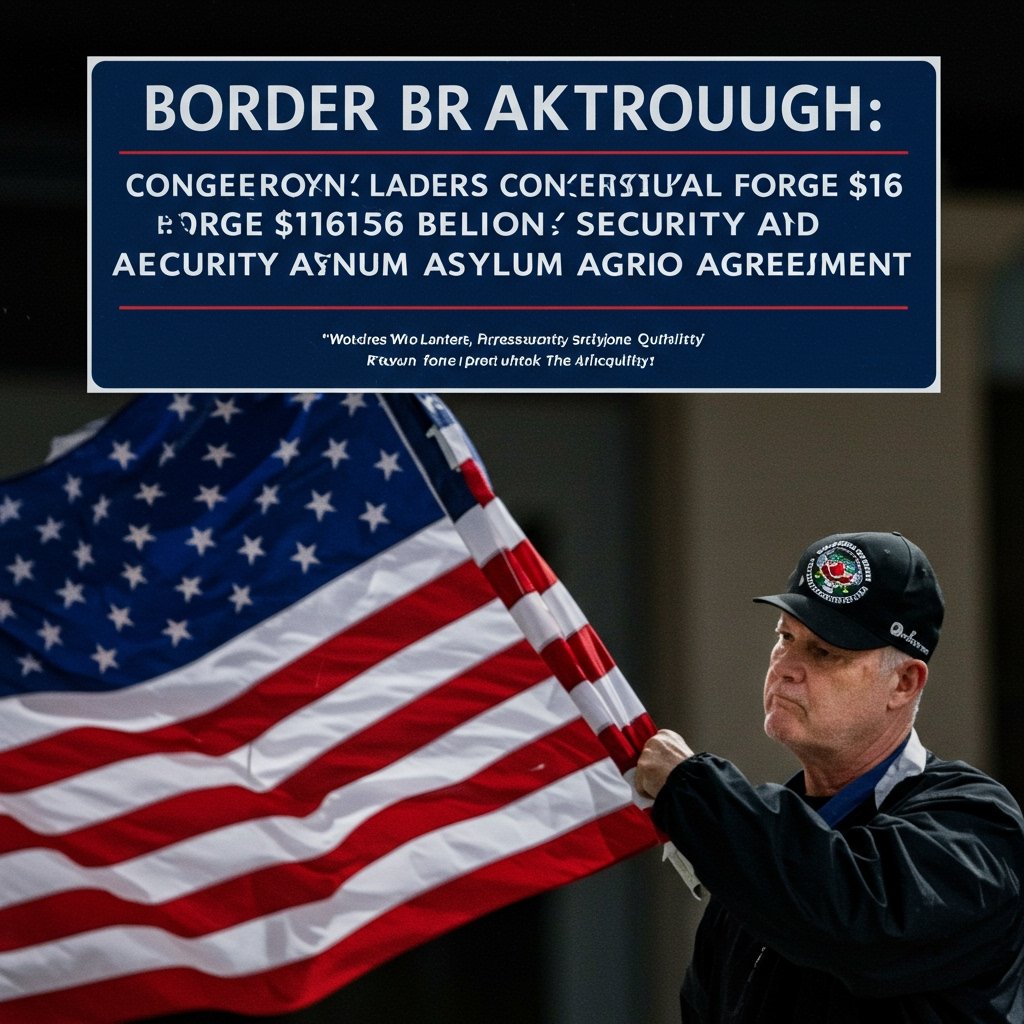Congressional Negotiators Announce Tentative Border Security Deal
Leading bipartisan negotiators from both the U.S. Senate and the House of Representatives have successfully reached a tentative agreement on a significant legislative package aimed at addressing long-standing challenges at the nation’s Southern border. The proposed measure, formally known as the “Border Security and Asylum Reform Act of 2025,” represents a critical bipartisan effort to enact comprehensive changes to border management, security protocols, and the asylum processing system. The negotiators have expressed optimism that the bill could be brought before both chambers for a vote by early April, signaling a potential breakthrough on an issue that has historically divided Congress.
A $16 Billion Investment in Border Security
The core of the agreement is a substantial financial commitment, totaling approximately $16 billion. This funding package is specifically allocated to enhance operational capabilities and infrastructure along the Southern border. A significant portion of these funds is earmarked for increasing personnel within U.S. Customs and Border Protection (CBP), aiming to bolster staffing levels to manage increased arrivals and expand enforcement activities. In addition to personnel, the bill provides funding for advanced detection technology, which proponents argue is essential for identifying illicit cross-border activity, including drug trafficking and illegal crossings, across vast and challenging terrains.
Furthermore, the $16 billion package includes targeted investments in infrastructure improvements. The agreement specifies that a particular focus will be placed on enhancing facilities and barriers along key stretches of the Southern border. Noteworthy locations identified for these infrastructure upgrades include areas near El Paso, Texas, and Yuma, Arizona, regions that have experienced particularly high volumes of migrant encounters and logistical strain on existing resources.
Key Compromise: Asylum Suspension Authority
A central and perhaps the most debated component of the “Border Security and Asylum Reform Act of 2025” is a newly established temporary authority concerning asylum processing. The bill includes a provision that would allow for the suspension of asylum processing at official ports of entry under specific high-volume conditions. This authority would be triggered if the average daily number of migrant encounters exceeds a predefined “high-volume threshold” over a consecutive 7-day period. Once triggered, this measure would temporarily restrict access to the standard asylum process at ports of entry until encounter numbers decrease below a certain level.
Proponents of this measure argue that it is a necessary tool for managing overwhelming surges in migrant arrivals. They contend that periods of extremely high encounter rates place an unsustainable burden on border personnel and processing facilities, leading to operational challenges and potential security risks. Implementing a temporary suspension mechanism, they argue, provides the administration with the flexibility to regain control during crisis periods and discourages mass movements that overwhelm the system.
Reactions and Concerns
The tentative agreement has drawn immediate reactions from various stakeholders. While the bipartisan nature of the deal has been lauded by some as a sign of potential progress on a difficult issue, specific provisions have also attracted significant criticism.
Various immigrant rights organizations have voiced strong opposition, raising concerns about the potential impact of the asylum suspension authority on individuals seeking protection in the U.S. These groups argue that restricting access to asylum at ports of entry, even temporarily, could jeopardize vulnerable populations and limit access to legal protections guaranteed under domestic and international law. They express apprehension that such a measure could effectively shut down lawful pathways for asylum seekers, forcing them into more dangerous circumstances.
Meanwhile, officials in border states are closely assessing the potential impact of the bill on local resources and operational capacity. Having navigated periods of high stress on their communities, including a recent period averaging over 6,500 encounters per day in late 2024 and early 2025, state and local authorities are evaluating how the proposed funding increases, personnel boosts, and the new asylum policy might affect the dynamics on the ground. Their assessment focuses on whether the measures will effectively alleviate pressure on shelters, healthcare facilities, and law enforcement, or if they will create new challenges.
Path Forward to Early April Vote
The announcement marks a significant step towards potential legislative action on border policy after years of partisan deadlock. While the negotiators have reached a tentative agreement, the bill must still navigate the legislative process in both the Senate and the House of Representatives. Securing enough votes, particularly in a divided Congress, will require continued negotiation and political maneuvering.
The aim for a vote by early April indicates a desire to move the legislation forward relatively quickly, capitalizing on the momentum of the bipartisan agreement. However, given the contentious nature of immigration and border security issues, debates are expected over specific provisions, funding allocations, and the potential implications of the asylum changes. The coming weeks will be crucial as the text of the “Border Security and Asylum Reform Act of 2025” is finalized and presented to the broader membership of both chambers for review and debate before any potential vote.






